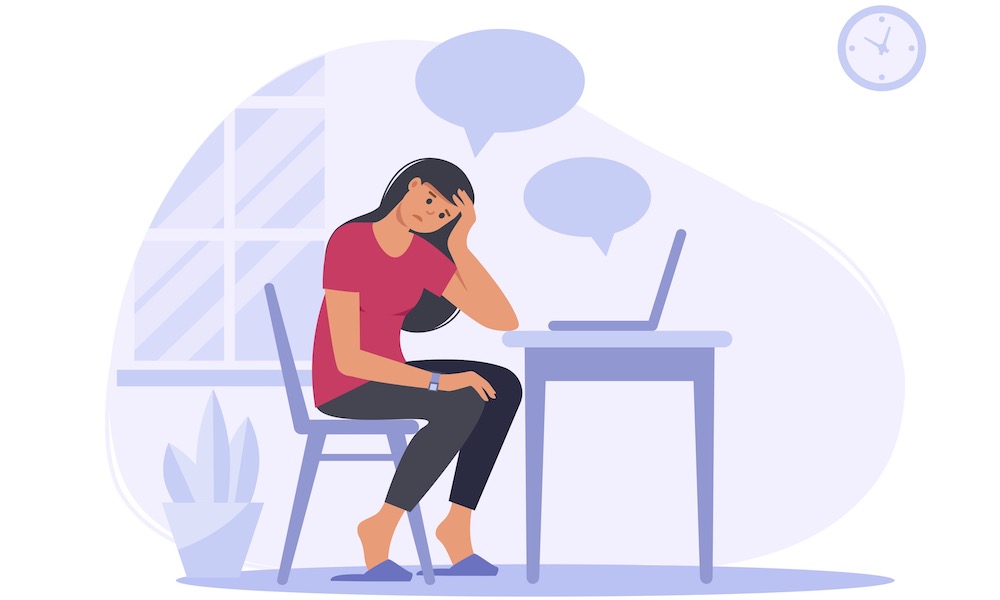If you’ve felt a financial crunch in recent years, you are not alone. In fact, the rising cost of living is pushing many Portland families to consider relocation.

Portland’s housing market has felt impossible to buyers and renters for so long now that mentioning it seems more like a joke than like news. But to a growing proportion of Portland families, the housing market combined with skyrocketing food costs, still-elusive child care, and general inflation make our city flatly unlivable. To them, it is no joke at all; and many are sadly but seriously considering leaving.
The Problem
The Living Wage Calculator from the Massachusetts Institute of Technology concludes that a household with two working adults and two children needs $110,329 to live comfortably in Portland, Oregon. That’s nearly 400% the federal poverty level, otherwise known as high-income. It is also well above the $90,000 median household income reported for Portland by the city government for 2022. In case your statistics are rusty, that means half the households in Portland earn above $90,000, and half are below. In other words, more than half the households in Portland do not make enough money to live here.
Richard White, professor emeritus of Urban Studies at Portland State University (PSU), says that families come under financial strain when they are spending more than one third of their income on housing costs (which includes rent/mortgage, utilities and maintenance). According to the U.S. Census Bureau, the median percent income spent on housing is at or more than 30% for all the counties in the Portland area. (Washington County, at 28.7%, is the only exception.) About half the households in Portland, then, are under financial strain from housing alone.
The lower the household’s income, the higher the strain. “When housing prices are high,” says White, “low-income earners shift priorities to housing over food and health care. They also tend to attempt to preserve housing by cutting back on utilities (i.e. heat). Consequently health costs rise. The variable with the most impact on health is stress. People who live in high-stress environments have more health problems and shorter lives. As the range of life-choices are narrowed … stress rises and health declines.” One effect on families of living in a city that is chronically more expensive than they can afford is that their already-high stress is likely to be compounded by increasing mental and physical illness, which comes with a financial and emotional cost of its own.
The People
Molli Taylor is a freelance writer living in North Portland. “I moved here from New York City in 2004 with my then-toddler and my then-husband, because I was worried about raising a child in a city as expensive as NYC,” she says. She says the move worked fine at first, but after she got divorced in 2015, the rising cost of living in Portland started to have serious consequences for her and her five children and stepchildren (she also has two adult children). She was homeless for a few months, had her children taken away from her for ten months before she could get a custody hearing, and dealt with nightmarish landlord scenarios.
In July 2017, she and her current husband found a three-bedroom in North Portland through a Facebook ask. “We love our house and the neighborhood and it’s severely below market rent. When we moved in, we had my three children part-time, but then we ended up taking in my three stepkids and the home started to feel very small.”
Then the pandemic hit. “My husband was working as a janitor in a theater and I was doing freelance writing. His place of business was not legally allowed to be open, so he lost his job. My client load was reduced by half because no one had money. … But the rents didn’t go down at all. We got rent assistance a few times, but then they stopped letting people recertify.”
Although their jobs have stabilized in the last year, and they have remained in their under-market North Portland rental, Taylor says nearly all their income goes to rent. She adds that there is none left over to save, either for emergencies or for first and last month’s rent and security to move into a new place. They get EBT/SNAP food stamps, and sometimes have to apply for utility assistance. She house-sits to help lower utility costs and boost their income. “We have gotten really creative with our money. We joined our local Buy Nothing group. … We don’t buy anything we can get secondhand. We go to food pantries and gleaner operations and we have a few awesome neighbors who are into mutual aid and do surplus food runs for stuff the kids can eat and make themselves.”
Taylor says that because their kids are not all biologically related, and some are transgendered, they need a four-bedroom place. But almost all low-income housing is one-two bedrooms, with the occasional three-bedroom. There is only one building in North Portland that offers four-bedroom low-income housing, and she has been on the waitlist there for more than a year. The timing depends on other families moving out, so she does not even have an estimate of when they might get in, but she has friends who have waited on housing lists in Portland for five years or more.
She and her husband love their neighborhood and community, and their kids are happy in their schools. But the wait has been hard. “I’m really torn, because I want to stay in this place where we have found community,” she says. “I have a transgender teen and a nonbinary 11-year-old. Most of our family is neurodivergent, and I’m deaf. I really worry about moving someplace with fewer resources, which is less accepting, where we don’t know as many people.”
But at their income level and life stage, they want to be paying a mortgage, not rent. Taylor is from the East Coast, and says her family could get “a four-bedroom, two bath move-in ready home in a decent neighborhood in a moderately sized city” in Maine, for the price of a manufactured home here. “Portland is really a special place where we can count on certain laws and norms to keep us safe,” she says, “but what good is it if we are homeless with five kids?”

Kate Kimball’s story is different, but it has led her to a similar conclusion. She is a communications consultant and single mom who lives with her 4-year-old in the Madison South neighborhood. She started her career in politics and public policy, working across the Midwest. Then she wanted to be somewhere more progressive and also have access to the great outdoors and so in 2011, she moved to the Rose City from Chicago. Then in 2019, right before the pandemic hit, she was diagnosed with breast cancer. “I completed one and a half years of chemo infusions,” she says, “and will be on oral chemo and ongoing medical care for years to come. The costs of having cancer in the United States, unless a person comes from generational wealth or hits the lottery, are impossible to manage. This reality, coupled with the rising cost of living in Portland, is unsustainable.”
She limits costs like eating out, entertainment, and travel, but still has difficulty affording basic expenses like housing, child care and food. She found financial support from Michelle’s Love, a local nonprofit that provides assistance to single parents undergoing cancer treatment. “They helped pay my rent and provided meals as I went through cancer treatment. It was a tremendous relief not to worry about housing costs during that time, so I could focus on my health and being a mom.”
Kimball says she feels inflation everywhere, from the gas pump on up. But the cost of child care is her biggest burden. Her son will be starting kindergarten in the fall. Until then, her choices are to keep paying the high cost of private pre-K, or enroll him in the Preschool for All program. She appreciates that this program is a national trailblazer in terms of universal child care. However, in all the moving pieces of PFA’s pilot year, she has only been able to get a half-day slot for her son, which is unworkable for her because she works full time.
As the cost of living has continued to rise, she says she has had increasing difficulty in justifying why she chooses to live here with her son. Since she can work remotely, she is considering joining the mass exodus from cities to smaller, less-expensive outlying communities.
The Possibilities
Portland’s cost-of-living problem is a thorny mix of national and local difficulties: rampant inflation, stagnant wages, a nationally broken child care system, and a local housing market that lacks an adequate supply for the population.
There are a lot of avenues for help that don’t work. In spite of their ingenuity, unexpected expenses can still put Molli Taylor and her family under. “I’ve done a couple GoFundMes for things that come up because we are paycheck to paycheck,” she says, “and every time there’s people telling me to ‘just find a cheaper place to live’ or ‘go to (the Oregon Department of Human Services, DHS), they will help you.’” But she says she’s tried: DHS informed her to call 211, after which she’s told that there’s nothing available; gave her population-specific resources she doesn’t qualify for; or has a long waitlist. “I think people are of the impression that (Temporary Assistance for Needy Families, TANF) is easy to get and offers a whole lot of money, but that’s not the case. Getting any kind of assistance becomes a part-time job.” She could try to work more hours, knowing that won’t cover her expenses; or she could instead stand in line or hold on the phone in hopes that they will be able to help. But even if they can, it may take weeks or months.
There are nonprofits devoted to helping Portlanders manage the cost of living here. Jami LeBaron works for Rose Community Development, which provides permanently affordable housing in outer Southeast for households that are at 0-60% of the median area income. It also offers after-school programs, camps, a food market, addiction prevention programs and mediation.
LeBaron sees firsthand the effects of rent burden. “Some families are spending a huge percentage above 30% of their income on rent,” she says. “They’ll work multiple jobs, which comes with spending more time away from family. They calculate their costs incredibly closely, and save wherever they can, but it’s often still not enough. They deal with chronic stress and its trickle-down effects on health, parenting and other caring.” The problems are systemic, and everything happens in a context. “If you aren’t going to eat out, that means someone needs to grocery shop. And then cook. Who’s going to do that if all the adults are working multiple jobs?”

“Who’s going to do it” is a big question, too, when there is only one adult. McKenzie Hatton is a single working mom of two, and is eight years sober from meth. She left home at 16 and is now 31. “I’m a survivor,” she says. “That’s what I do. That’s what I’m going to keep doing. And I have two kids, and I’m going to take care of them. But I do wonder — how long do I have to stay in survival (mode), just barely making it?” She says she lives paycheck to paycheck, and is in a constant cycle of loans. “And I know rich people have problems, too. But I work at fancy hotels, and sometimes I see the families there, and I think, ‘I wish I could go to the store and if my kid asks me for something I could just say, ‘Yeah, I got that.’”
Hatton says she is grateful for her low-income housing, but is also frustrated by her living situation. She moved into a one-bedroom apartment in 2019 with her then 3-year-old. She started trying to get a bigger unit before she got pregnant with her second child. Now she has a 7-year-old, a 1½-year-old, and more stuff, and is still in the one-bedroom and horribly cramped. She says she keeps going in circles with management, partly because the property management companies turn over so quickly that she has to continually re-explain herself. She wants to move but can’t. And then there’s child care assistance. “Without the state I wouldn’t have child care, and that would make my life even more complicated,” she says. “But man, there are a lot of hoops. I know they’re trying to prevent people from taking advantage of the system, but it makes the rest of us work really hard to get the help we need.”
Receiving assistance, Hatton says, requires her to calculate hours, take classes, and watch minimums and thresholds. A one-dollar raise could put her out of range for child care assistance, which means no child care. And when she takes the amount the state gives her to her day care, they sometimes say that’s not enough, and the whole cycle restarts.
What can you do? Whether you’re feeling the crunch enough to consider moving or not, there are ways you can help. First, support affordable housing initiatives wherever you can find them. Check out the PDX Residential Infill Project, which builds on the growing flexibility in rules governing the types of housing allowed in residential neighborhoods. Accessory dwelling units and duplexes were already allowed on corners; the Infill Project attempts to limit the size of buildings to keep a neighborhood feel, but expands the allowed units to duplexes, triplexes and townhomes. Look for and support camp and out-of-school opportunities like Zenger Farm or the Community Cycling Center, which offer a sliding scale and provide scholarships to lower-income children. Ask what you could do to increase the availability of experiences to kids for whom they are currently out of reach.
Hatton says that impactful change doesn’t always require local or federal policy shifts. “I think what would help most is a little from everybody,” she says. She wishes people would think harder about how other people are doing, spend more energy on imagining what it might actually be like. This is what LeBaron recommends, too, for anyone who wants to know how better to help: start by asking yourself questions. What if I were a single parent? What if I were sick? What if I had half my income? What if I needed to get away suddenly from an unsafe situation at home? What would I need? For inspiration, start volunteering as a family, and check out Willamette Week’s Give!Guide, which highlights local nonprofits making a difference in all kinds of areas. The hardest thing will be choosing.
- Family-Friendly Yoga Studios in Portland - January 1, 2024
- 11 Family-Friendly Bookstores in the Portland Area - November 6, 2023
- Portland’s Youth Performing Arts Spring Lineup - April 6, 2023




